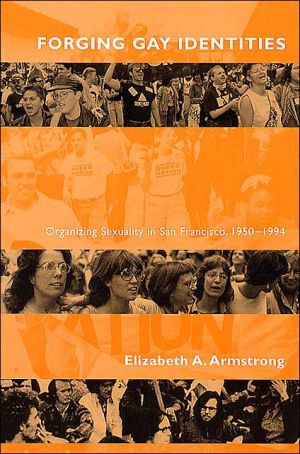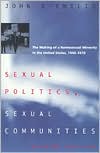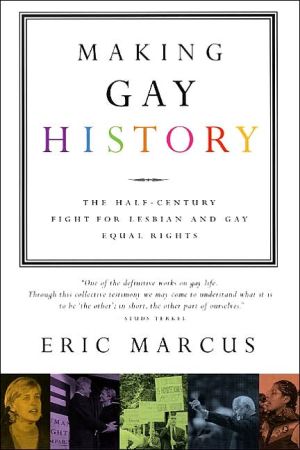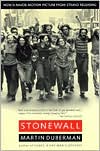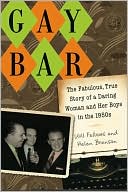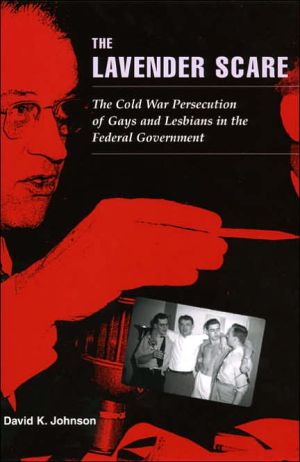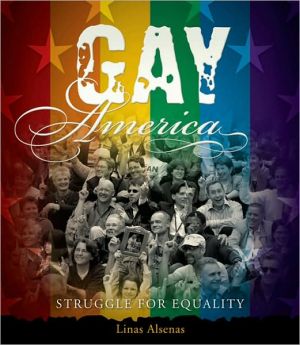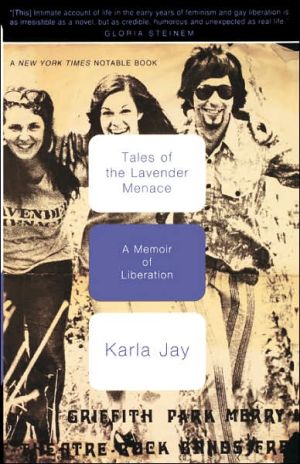Forging Gay Identities: Organizing Sexuality in San Francisco, 1950-1994
Unlike many social movements, the gay and lesbian struggle for visibility and rights has succeeded in combining a unified group identity with the celebration of individual differences. Forging Gay Identities explores how this happened, tracing the evolution of gay life and organizations in San Francisco from the 1950s to the mid-1990s.
Search in google:
Unlike many social movements, the gay and lesbian struggle for visibility and rights has succeeded in combining a unified group identity with the celebration of individual differences. Forging Gay Identities explores how this happened, tracing the evolution of gay life and organizations in San Francisco from the 1950s to the mid-1990s.
Forging Gay Identities: Organizing Sexuality in San Francisco, 1950-1994\ \ By Elizabeth A. Armstrong \ University of Chicago Press\ Copyright © 2002 Elizabeth A. Armstrong\ All right reserved.\ ISBN: 0226026949 \ \ \ ONE - The Transformation of the Lesbian/Gay Movement \ \ Every year in San Francisco, the last Sunday in June is devoted to the Lesbian/Gay/Bisexual/Transgender Freedom Day Parade and Celebration. The parade brings several hundred thousand people into the streets to participate in a collective contemplation of contemporary lesbian and gay life. It is impossible to absorb the entire spectacle. Parade contingents represent the diversity of lesbian and gay organizations and display myriad variations on lesbian and gay identity. Onlookers read the banners with organization names and the signs that designate individual identities. As the contingents pass, people's comments range from amusement to erotic appreciation, from deep respect to downright disgust. The community relishes the spectacle--an enacted, moving list--a literal field of organizations and identities. The parade's public display of identity is powerful although, of course, ephemeral. But the organizations that participate in the parade are not so fleeting. Most are permanent. This is an annual celebration of the organizational infrastructure that grounds the life of San Francisco's lesbian/gay/bisexual/transgender communities. \ \ Neither theparade nor the organizations in it existed before 1970. Thus, the parade reflects the proliferation and diversification of lesbian/gay organizations in the last thirty years. Since 1950, such organizations in San Francisco have evolved from a tiny underground bar subculture of uncertain legality into a sprawling, interlocking set of visible organizations that influence virtually every aspect of life in the city. From 1964 to 1994 the number of nonprofit homosexual organizations in San Francisco increased from 6 to 276. \ \ This book examines this evolution in gay life, gay organizations, and gay identity. The story of this evolution is not a tale of smooth, gradual development. Instead, it occurred in two historic ruptures. Throughout the 1950s and 1960s, public homosexual organizations were limited to a tiny number of organizations that thought of themselves as "homophile." Homophile organizations modeled themselves on interest group politics and hoped to improve life for homosexuals by educating the mainstream public. They had names that conveyed little explicit information about sexual identity, such as the Society for Individual Rights, the Daughters of Bilitis, and the Mattachine Society. \ \ The first rupture occurred in 1969, when gay liberation made its dramatic appearance. Gay liberation defined itself in opposition to the existing homophile project. Like other parts of the New Left, gay liberation was complex and contradictory. The most radical strand of gay liberation, which I refer to as "gay power," sought a total transformation of society. Sexual liberation was defined as merely one aspect of a broader social transformation. Building gay identity was seen as a step toward eliminating social categories altogether. \ \ The second rupture, which occurred in the early 1970s, was less dramatic but even more significant. At that point, affirming gay identity and celebrating diversity replaced societal transformation as goals, marking the origins of a gay identity movement. This shift in logic sparked the rapid proliferation of a vast diversity of new gay organizations. These new organizations had more specific titles, reflecting a continuously unfolding variety of new identities and subidentities, such as Affirmation Gay/Lesbian Mormons, Gay Asian Pacific Alliance, Straights for Gay Rights, and Gay American Indians. Organization names now included elaborate identity information and represented specialized subidentities. This turn toward identity building was accompanied by rapid political consolidation and the explosive growth of a commercial subculture oriented around sex. For the first time, gay organizations agreed upon a national gay rights agenda and moved aggressively to pursue common goals in the political arena. \ \ These vast changes in the gay community present a fascinating puzzle for those wishing to understand the social forces that hold social movements together. In the lesbian/gay movement, which scholars have referred to as the "quintessential identity movement," we find a paradox. Contrary to the assumptions and expectations of many experts on social movements, the focus on identity building and identity elaboration has not proved to be paralyzing or divisive for the gay movement. Paradoxically, the unity and diversity of the gay community seem inextricably interconnected. Therefore, by looking closely at this "quintessential" identity movement we can better understand a phenomenon that is common to many contemporary social movements. \ \ In this book, I argue that the key to understanding the paradox of gay identity lies in its historical origins. The ability of the gay movement to balance commitment to a group identity with the protection of individual differences was built into the movement as it crystallized in the early 1970s. The movement would not have coalesced when and as it did without the development of homophile politics before 1969, the cultural innovations made available by the New Left, the sudden decline of the New Left in the early 1970s, and the efforts of activists in the early 1970s to ensure that the gay movement survive. Each of these processes contributed in a crucial way to the movement that formed in the early 1970s. In isolation, these processes would have been insufficient. Only because they all happened in sequence did they lead to the forming of a gay identity movement. \ \ Homophile organizing in the 1950s and 1960s began the process of transforming homosexual identity from a private group consciousness into a public collective identity. It established the legitimacy of creating public organizations of homosexuals and the notion that homosexuals were a group deserving rights that could be won by engaging in interest group politics. But homophile politics could not have generated the visible public identity needed for truly effective use of interest group politics, nor could it have justified a proliferation and diversification of organizations. The encounter between established homophile organizing and the New Left produced gay liberation and provided homosexual activists with the cultural tools that made "coming out" possible. The decline of the New Left reduced the plausibility of revolutionary socialist ideas and cleared the way for an identity-focused "gay pride" movement. \ \ By defining the primary goal of gay politics as the expansion of the range of ways to express gay identity, the gay movement was able to balance interest group and identity politics. This way of understanding the goal of gay politics highlighted the most individualistic aspects of identity politics. Other movements understood identity politics as endorsing the creation of communities of similarity. In contrast, the gay movement focused on freedom of individual expression, making it hypocritical to exclude any form of gay political expression. Gay interest group politics--pursuing gay rights--was defined as one possible way to express gay identity. Activists were thus able to reframe a potential liability as an advantage, redefining the community's diversity as strength. "Difference" was defined, paradoxically, as a point of similarity. Gays and lesbians were all individuals in search of freedom of expression. Instead of extrapolating from "what we share is that we are all different from straight people" to the notion that "we must all be the same," the gay identity movement acknowledged, "yes, together we are different from straight people, but as individuals we are also different from one other." Individualism, which one would expect to hamper collective action, in this case structured and motivated it. \ \ The vision of a unified but diverse movement was further reinforced by the discovery that a common, well-understood kind of cultural event, a parade, provided experiential evidence for the claim that unity and diversity were not in contradiction. Lesbian/gay freedom day parades provided an articulated structure linking gay organizations while allowing an unfettered display of diversity. Unlike a march, which requires agreement on a set of political demands, a parade needs only the willingness of participants to be associated with each other. \ \ This book tells the story of how, in the early 1970s, a tiny group of gay activists created a new understanding of same-gender sexual experience that would have far-reaching implications. This model of identity influenced the ways people all around the country and the globe make sense of same-gender sexual desires, practices, and relationships. It enabled the spectacular cultural, political, organizational, and commercial successes of the gay movement in the 1970s and 1980s. The movement was culturally generative; its very logic challenged members to produce more variants of gay identity. The new framework shaped what was possible and what was not possible for the gay movement to accomplish. Movement claims to universality and diversity made it difficult for those excluded to identify the ways the movement reflected the particular experiences of a cohort of white, middle-class American men. The gay identity movement enabled an impressive gay response to the AIDS epidemic, which led to the emergence of a competing set of AIDS organizations. Internal contradictions embedded in the movement at the moment of founding continue to shape debates in gay politics today and provide the fissures that may lead to the possible demise or transformation of the movement. \ \ I focus on San Francisco because it, along with a few other major urban centers in the United States, served as the birthplace of what has become a national (and even international) lesbian/gay movement. The frameworks forged in these core cities diffused to smaller cities and towns around the country. Evidence of this diffusion can be seen in the proliferation of freedom day parades, the ubiquity of the language of coming out, and the spread of gay rights politics. Those who have studied lesbian and gay life in smaller towns might argue that the assumptions of the urban-centered gay movement do not describe gay life outside of big cities. This lack of fit does not negate the reality that, in the early 1970s, a hegemonic understanding of same-gender sexual experience crystallized in a few urban centers in the United States and that others, even those whose experience it describes less well, have now to contend with it. The chapter proceeds by outlining a cultural-institutional approach to social movements, followed by a description of how lesbian/gay San Francisco changed over time, and concludes with an overview of the arguments presented in the book. \ \ A Cultural-Institutional Approach to Social Movements \ \ I developed this explanation of the evolution of the gay movement in San Francisco through applying a cultural-institutional approach to social movements. This approach integrates the insights of cultural theories of social movements with the analytical power of field approaches to institutional change developed by organizational theorists. I review cultural approaches to social movements, showing how they developed in response to weaknesses in political process and resource mobilization (PP/RM) theories of social movements. I argue that cultural approaches to movements continue to rely on concepts steeped in the resource-rationalist assumptions of political process and resource mobilization theories. I then show that contemporary organizational theory has developed in ways compatible with a cultural approach to movements. This makes it possible to address limitations of the cultural approach to movements through drawing on concepts from contemporary organizational sociology, particularly the concept of "field." I conclude the section by showing how a cultural-institutional approach enabled a description of lesbian/gay movement development impossible within political process and resource mobilization approaches to social movements. \ \ Cultural Approaches to Social Movements \ \ Cultural approaches to social movements are diverse, ranging from European new social movement theories to historical scholarship on the role of culture in political change. The thread that unites this work is a critique of the resource-rationalistic assumptions shaping the PP/RM theories that have dominated social movement scholarship since the early 1980s. \ \ It is often noted that resource mobilization theory "rescued social movement activity from the irrational world of the psychologically needy, and placed it in the intellectual world of rational politics." Arguing against collective behavior and mass society theories, resource mobilization theorists asserted that social movements are rational, goal oriented, and organized rather than spontaneous and pointless. Movements succeed or fail depending on access to resources and political opportunities. \ \ Less remarked upon is that the argument for the rationality of movements relied upon claims about the nature of society, particularly American society. In Political Process and the Development of Black Insurgency, Doug McAdam argued that social movements were rational because society was organized around an unjust set of political and economic rules that excluded many from access to legitimate channels of influence. Thus, it was only rational for those excluded to conduct politics through "noninstitutionalized" channels. Political process theory focused on change efforts initiated by the powerless and designed to redress economic and political inequalities through noninstitutionalized channels. This view limited attention to movements that seek the redistribution of economic or political power. Other kinds of collective efforts to achieve social change fit uneasily, or not at all, within this definition of the object of study. \ \ A number of scholars, such as Steven Buechler, have argued that "theoretical development never occurs in a socio-political vacuum." Scholars developed resource mobilization and political process theories in order to explain the civil rights movement and other 1960s movements. However, as scholars became interested in other movements, such as the women's, environmental, and lesbian/gay movements, they found that PP/RM theories did not adequately describe or explain these movements. As Mary Bernstein observed, PP/RM theories were "unable to explain social movement action that seems to be working at cross purposes to achieving policy change." The cultural goals of identity movements appeared "nonpolitical" from within PP/RM frameworks. Not only were these movements pursuing the "wrong" goals, they were also composed of the "wrong" people. Some participants, such as white middle-class gay activists, were privileged in many ways. The expressive methods sometimes used by these movements seemed pointless within PP/RM theories. Rational theories of individual motivation did not explain why people participated. In short, these movements were not acting the way PP/RM theories suggested that movements were supposed to act. \ \ Scholars responded to failures of PP/RM to account for "new" social movements in several ways. One response was to dismiss these movements as "apolitical" and to berate contemporary movements for "selling out" by turning to dead-end identity politics. A second response was to modify PP/RM theory in order to account for these new movements. This approach attempted to interpret the cultural motivations and goals of new movements within a resource-rationalist view of social movements. For example, resource-rationalist understandings of individual motivation asserted that people participate when offered material incentives. PP/RM theorists developed the notion of "identity" or "solidary" incentives to explain why some people participated even without material incentives. Francesca Polletta and James Jasper have responded by arguing that "arguments like these, designed to show that cultural meanings and emotions are not logically incompatible with rational-actor models, yield convoluted causal pictures.. . . Why not simply admit the emotional satisfactions of collective identity?" \ \ The third response to the failures of PP/RM theories was to develop new theories to understand and explain these new movements. New social movement (NSM) theory devoted itself to describing what was "new" about post1960s movements. These scholars, who were predominantly European, saw a focus on identity as "the most distinctive feature of NSMs." NSMs were also seen to differ fundamentally from earlier movements in terms of tactics, structure, and participants. This literature claimed not only that NSMs were "fundamentally different from the working class movements of the industrial period," but also that these movements were the "product of the shift to a postindustrial economy." \ \ In contrast, historical scholars argued that identity was not new in contemporary movements, but that the role of identity in earlier movements was not fully understood. Historical scholarship on the role of culture in political change built on William H. Sewell Jr.'s work on revolutionary France. He showed that in moments of "collective creativity," the cultural constitution of interests and identities could change abruptly and profoundly in ways that could not be predicted from changes in political and economic institutions. Scholars engaged in historical work on collective action have developed a rich body of scholarship showing how meaning construction contributes to collective action. \ \ "Framing" and "collective identity" literatures have also contributed to an emerging critique of resource-rationalist perspectives on movements. Frame analysis of movements, developed by David Snow and colleagues, assumes that meaning does not "grow automatically out of structural arrangements, unanticipated events, or existing ideologies. Rather, movement actors are viewed as signifying agents actively engaged in production and maintenance of meaning for constituents, antagonists, and bystanders or ob-servers." Similarly, work on the role of collective identity in movements argues that analysis of collective identity produces insights into why groups form around an issue, how interests emerge, why people participate in movements, and why groups choose the forms of protest they do. \ \ These cultural approaches all treat interests and identities as politically constructed, define social movements broadly, see the state as one among many possible targets for social movement action, see the instrumentality of cultural strategies and the culturally constituted character of instrumental action, attend to the cultural creativity of movements, and understand that while movement action is "meaningful," it is not always "rational." \ \ Cultural approaches to social movements build on and contribute to a widespread interest in the role of culture in sociology more generally. However, these approaches still rely on concepts embedded within resource-rationalist theories that trivialize and obscure social processes in which they are interested. For example, the term "social movement" remains laden with meaning associated with political process theories. While scholars have redefined the concept to refer to all collective efforts to accomplish social change,27 the term still evokes the sense that the more directly a movement seeks to change state policy, the more legitimate it is as an object of study. Phenomena such as denominational challenges within the religious sector, efforts within the corporate sector to extend partner benefits to lesbian/gay couples, and challenges to the organization of medical care or education tend to be seen as peripheral to the central concerns of social movement scholarship. A cultural approach to movements needs concepts that legitimate the study of the full range of collective efforts to accomplish social change while providing analytical tools for scholars to make finer distinctions among different kinds of collective action. \ \ Social Movement Approaches to Organizations \ \ Contemporary scholarship in organizational analysis has developed concepts that can address the weaknesses of a cultural approach to social movements. To show how organizational sociology can contribute to a cultural approach to movements, I first discuss the development of field theory within organizational sociology. \ \ Turning to organizational sociology in order to enrich social movement theory is not new. Resource mobilization theory was founded by applying 1970s organizational theory to social movements. In the early 1970s organizational theorists assumed that formal organizations acted rationally, in pursuit of goals, and that their success or failure depended upon resources. Resource mobilization theory applied this reasoning to social movements, arguing that social movement organizations were like any other organization. \ \ In the intervening years organizational researchers have developed approaches to organizations critical of these resource-rationalist approaches. Organizational ecology called into question the usefulness of thinking of organizations as acting rationally, but placed a heavy emphasis on the importance of environmental resources in determining organizational survival. \ \ Population ecology contributed to a shift in organizational analysis from examining individual organizations to a focus on populations of organizations. \ \ With the emergence of neoinstitutional theory, organizational theory developed an approach critical of both resource and rationalistic assumptions. Neoinstitutional theory argued that the structure and survival of organizations could be explained as much by how well they resonated with their symbolic environment as by their technical efficiency. Paul DiMaggio and Walter Powell used the term "organizational fields" to refer to the organized arenas that exert influence over the structure of individual organizations. In contrast to "populations of organizations," defined by population ecologists in terms of shared location in an objectively defined competitive niche, the concept of organizational field referred to culturally and politically constructed arenas. Field members share understandings about the goals of an enterprise, about who can participate, and about how the enterprise is to be pursued. Fields crystallize around institutional logics, which define the taken-for-granted rules structuring goals, strategies, and members of the field. Within established fields, identities and interests are institutionalized. A practice, structure, or arena of social life is institutionalized to the extent that it is "stable and self-reproducing." By establishing the "rules of the game," fields limit the strategies of action that can be pursued. Some forms of action are defined as appropriate and possible, while others are not. The rules of the game in established fields tend to benefit some actors more than others. The limiting of appropriate and possible organizational forms tends to produce organizational homogenization. The more structured the field, the more homogeneous the organizations. \ \ In its original formulation neoinstitutional theory was of limited interest to social movement scholars, as it explained the reproduction of institutions, not institutional change. By the time Powell and DiMaggio's edited collection The New Institutionalism in Organizational Analysis was published in 1991, institutionalists were beginning to address the inability of their theories to account for agency, power, and institutional change. In their search for tools to help them explain institutional change, scholars turned to social movement theory for theoretical resources, thus reversing the flow of ideas from organizational to social movement scholarship. Organizational theorists have found social movement theory to be a theoretical treasure trove and have borrowed liberally from all parts of social movement scholarship from resource mobilization to NSM theory. \ \ Research at the intersection of social movement and organizational scholarship has the potential either to reinforce resource-rationalist assumptions or to extend cultural approaches. Kelly Moore and Michael Young have expressed concern that work at this intersection seems to be relying more on social movement theories based on resource-rationalist assumptions. They argue that these approaches \ \ \ don't go far enough: they remain tied to theories of social movements that were themselves heavily indebted to studies of profit-making firms and rely on an instrumental-resource view of organizational action. The distinctiveness of collective oppositional action is underplayed in their propositions.. . . Continuing down the road signposted by resources and instrumental action will not allow us to develop greater understanding of the significance of social movements as crucibles of dissent, creativity, and audaciousness.\ \ \ It would be a mistake for organizational sociology to return to an approach that takes rationality for granted. As Frank R. Dobbin persuasively argues, cultural approaches to organizations have energized organizational sociol-ogy. Scholarship at the intersection of organizations and social movements is likely to be advanced by integrating the insights of cultural approaches in both areas. Michael Lounsbury and Marc Ventresca, in their introduction to an analogy of current research in organizational sociology, concur when they recognize that "a focus on cultural processes can reorient and renew a broader social structural approach to organizations.. . . Cultural approaches to social structure provide particularly fertile ground for the development of novel theoretical insights." \ \ A Cultural-Institutionalist Approach to Social Movements \ \ The current round of cross-fertilization between social movement and organizational theory has occurred almost entirely within organizational sociology, in the service of advancing organizational theory. A few scholars, such as Neil Fligstein, Elisabeth Clemens, Debra Minkoff, Doug McAdam, and W. Richard Scott, have begun to articulate the implications of this new intersection for social movement scholarship. \ \ I develop the contributions of contemporary organizational theory for social movement scholarship, focusing on how a field approach contributes to cultural approaches to social movements. I show how incorporating the concept of field allows the study a broad range of collective action projects, makes visible processes of institutionalization obscured within PP/RM theory, and provides new tools for sharper analytical distinctions among types of collective action. \ \ While the shift in level of analysis introduced by the concept of field is important to social movement scholarship, that the concept of field is premised on a social constructionist understanding of reality is even more important. As discussed above, fields are defined by the existence of shared understandings about the rules of the game structuring an arena. Institutionalists do not restrict their interest to particular kinds of fields or assume a priori the logic holding together a particular field, but rather treat as problematic the process through which actors come to understand the boundaries of collective projects. \ \ Defining social movements as collective efforts to create new fields or to transform existing fields theoretically justifies the study of the full range of social change projects. This approach allows us to analyze efforts to change the rules of the game, whether that game is literally being played on the playground or has to do with the trade of currencies. What defines the study of social movements is the interest in collective challenges to the rules of the game--action that is not simply reproducing the rules of a given arena. PP/RM privileged collective action challenging the state. A cultural-institutional approach to movements also studies collective action challenging the rules governing other arenas. Contentious politics occurs in all arenas. These processes are of interest to both social movement and organizational scholars. \ \ Not all movements aspire to (or achieve) the degree of institutionalization necessary to qualify as a field. Many social movements disband once they achieve (or fail to achieve) changes in the rules structuring the wider field in which they are embedded. Sometimes the creation of a movement field is an unintentional consequence of social movement activity. In other cases, such as the case of the women's movement in the United States from the 1940s through the 1960s, creating a field is necessary to ensure movement sur-vival. Creating a new field often requires changing the rules of the larger field in which it is embedded. Some movements attempt to change the rules in a localized arena (e.g., campus governance) while other movements engage in much more ambitious field formation projects (e.g., the formation of the European Union). Efforts to transform these arenas may emerge, succeed, and disappear; emerge, fail, and disappear; or emerge and become ongoing institutionalized projects that are, in turn, challenged. Fields form, change, and dissolve, sometimes as a result of social movement efforts, sometimes as a result of other processes. \ \ Organizing social movement analysis around the concept of field makes processes of institutionalization and deinstitutionalization visible. Field theory, based as it is on institutional analysis, is highly sensitive to the degree to which various arenas and practices are institutionalized. Characterizing phenomena according to their degree of institutionalization invokes an analytical dimension underdeveloped within social movement theory. This absence is puzzling, given that the study of social movements is about understanding how and why people endeavor to change established institutions and why they are (or are not) successful. \ \ Historically, the analytical power of social movement scholarship has been impoverished by simplistic assumptions about the degree of institutionalization of both social movements and the fields they have targeted for change. For example, it is frequently assumed that the targeted field is institutionalized while the movement is not. In fact, the degree to which targeted fields are institutionalized is highly variable. There is perhaps even more variance in the level of institutionalization of challengers. Contemporary social movement scholars have had a hard time making sense of cases where challengers are highly institutionalized. By defining the study of movements as the study of noninstitutionalized action, institutionalized movements such as the labor movement have been seen as not really fully legitimate objects of study for social movement scholars. Understanding such phenomena requires moving beyond assigning organizational sociologists the task of understanding stability and social movement theorists the task of understanding change. Social conflict often produces, and is in fact a necessary precursor to, the establishment of order, in the form of new fields. To understand stability we need to understand change, and vice versa. Thus, in addition to broadening the arenas of social life considered appropriate terrain for investigation by social movement scholars, a field approach also dismantles a tacit understanding that movement scholars limit their investigations to action outside the bounds of mainstream political institutions. \ \ Field theory also enables scholars to make more careful distinctions when describing and explaining change processes. Scholars committed to the perspective that high-risk political behavior challenging state institutions is uniquely central to fundamental societal change might argue that a field approach unravels decades of scholarship establishing the specific determinants of such behavior. However, a field approach need not treat all change efforts as equally salient or interesting. Institutionalists see society as composed of a multiplicity of fields, of varying levels of institutionalization, organized around varying logics. These fields are both overlapping and nested. Powerful fields exist in all arenas of social action, including political, economic, educational, medical, cultural, and scientific arenas. The state is, of course, uniquely important because it establishes the rules that govern all the other fields of society. Understanding fields as nested in this way allows distinctions to be made between important and trivial social change efforts. Efforts to transform fields that are deeply structuring of society, if successful, will be more consequential than efforts to transform other fields. \ \ The Transformation of the Gay Field \ \ When applied to the gay movement, this cultural-institutional approach to social movements enables a description of the transformation of the movement impossible within a PP/RM framework. Without the privileging of politics oriented to the state, it was possible to see that for actors the primary cognitive divide was between "gay" and "straight" worlds, not between that which was "movement" and "nonmovement" within the gay world. The project was one of creating and expanding gay social and political space, not simply one of sustaining a gay political movement or pursuing political grievances. This movement included gay rights organizations, but it also included lesbian quilters, the freedom day parades, and lesbian/gay newspapers. It was simultaneously cultural, political, and organizational. Indeed, the melding of cultural and political is precisely what was novel and challenging about this particular social movement. \ \ With the sensitivity to institutionalization processes of a field approach, I was able to see that a gay identity movement crystallized in the early 1970s. Institutionalization is neither "movement" nor "outcome"; thus in the PP/ RM perspective it vanishes from view in the void between concepts. Many of the signals of the consolidation of something new (e.g., the sudden appearance of annual parades and resource guides) fall outside of the social movement gaze, because they are not explicitly political in nature. Organizational proliferation does not register as being particularly salient to PP/RM scholars, unless this proliferation is of social movement organizations. By attending only to the most explicitly political of organizations, the shift over time appears simply as a shift from a movement seeking liberation to a movement seeking rights. While the move to a focus on rights was part of the shift that occurred in the early 1970s, it was only a part. The shift to a rights agenda was intimately connected with the consolidation of an identity-building project. What happened in the early 1970s was no less than the fundamental reconstruction of the set of cultural rules producing sexual identities. \ \ In fact, this perspective allowed me to see fundamental shifts in the core political logics guiding the movement. Political logics are background sets of assumptions about how society works, the goals of political action, and appropriate strategies to pursue desired ends. The concept of "political logic" is similar to both Roger Friedland and Robert R. Alford's "institutional logic" and David Snow and Robert Benford's "master frames." Master frames, like more simple collective action frames, provide shared understandings of the world that define problems, assign causes, and legitimate and motivate collective action. Master frames operate as the cultural backdrop of movements; they "color and constrain [the frames] of any number of movement organizations." Referring to "political logics" instead of "master frames" highlights the taken-for-granted, constitutive character of these theories about the nature of the world and the kind of action needed to improve it. New political logics cannot simply be created at will through the strategic framing efforts of activists, but only emerge under specific conditions of heightened cultural creativity. Social movement organizations are shaped by, but not reducible to, underlying political logics. Change in movement organizations is driven by change in political logics. \ \ This perspective allowed fine-grained analytical distinctions. It brought into focus both continuities between the contemporary gay movement and its pre-New Left forebears and differences between the gay movement and kindred movements. While NSM theorists see a class of "new social movements," a cultural-institutional perspective sees the development of a new political logic, which expanded the repertoire of political and cultural tools available to activists in the post-1970 era. While it is possible that changes in the fundamental nature of society have occurred, it is not necessary for them to have occurred to explain the production of this new political logic. This logic was available to all post-1960s movements, accounting for observed similarities among these movements. But it was incorporated differently in each movement. \ \ The cultural-institutional approach shaped data collection and analysis. Institutionalists use a variety of sources to gain insight into how people cognitively organize their worlds. They pay particular attention to organizations, both the kinds of organizations formed and the relationships among those organizations. Thus, institutional sociology guided me toward an examination of the organizational infrastructure of the lesbian/gay community. The central task was to describe, as systematically as possible, the development and transformation of the project of extending gay social space and defining, to the extent that it was possible, the boundaries as activists and community members defined them. I constructed a systematic data set of all the lesbian/gay organizations in San Francisco during the years 1964-1994 to provide a bird's-eye view of the organizational life of the community. \ \ I analyzed this exhaustive organizational data set both qualitatively and quantitatively. I noted changes in the numbers of organizations, the changing cultural content of organizations, and changes in the distribution of various kinds of organizations over time. I also collected and analyzed primary historical documents. Documents such as resource guides and newspapers provided crucial documentation of the way people understood their activities at particular moments in time. Successful institutionalization projects often produce a collective amnesia about their recent origins and possible al-ternatives. It is therefore crucial to be skeptical of accounts constructed well after the events in question. Focusing on one case allowed me to produce a thorough and systematic analysis of the development of the arena over time. Extending the time frame backward captured the early phases of field formation. \ \ \ \ Continues... \ \ \ \ Excerpted from Forging Gay Identities: Organizing Sexuality in San Francisco, 1950-1994 by Elizabeth A. Armstrong Copyright © 2002 by Elizabeth A. Armstrong. Excerpted by permission.\ All rights reserved. No part of this excerpt may be reproduced or reprinted without permission in writing from the publisher.\ Excerpts are provided by Dial-A-Book Inc. solely for the personal use of visitors to this web site. \ \
List of Tables and FiguresPrefaceAcknowledgmentsNote on Use of Identity Terms1The Transformation of the Lesbian/Gay Movement1Pt. IForging a Gay Identity Movement2Beginnings: Homosexual Politics and Organizations, 1950-1968313Innovation: Gay Liberation and the Origins of Coming Out, 1969-1970564Opportunity: Gay Liberation and the Decline of the New Left, 1969-1973815The Crystallization of a Gay Identity Movement, 1971-197397Pt. IIConsequences of Field Formation6Success: Growth of a Gay Identity Movement in the 1970s1137Exclusions: Gender, Race, and Class in the Gay Identity Movement, 1981-19941348Challenge: The Effect of AIDS on the Gay Identity Movement, 1981-19941549Continuity and Change: The Gay Identity Movement in the 1980s and 1990s176Pt. IIIConclusion10Institutions, Social Movements, and American Political Culture193AppConstructing a Database of San Francisco's Lesbian/Gay Organizations205Notes213Works Cited247Index261
